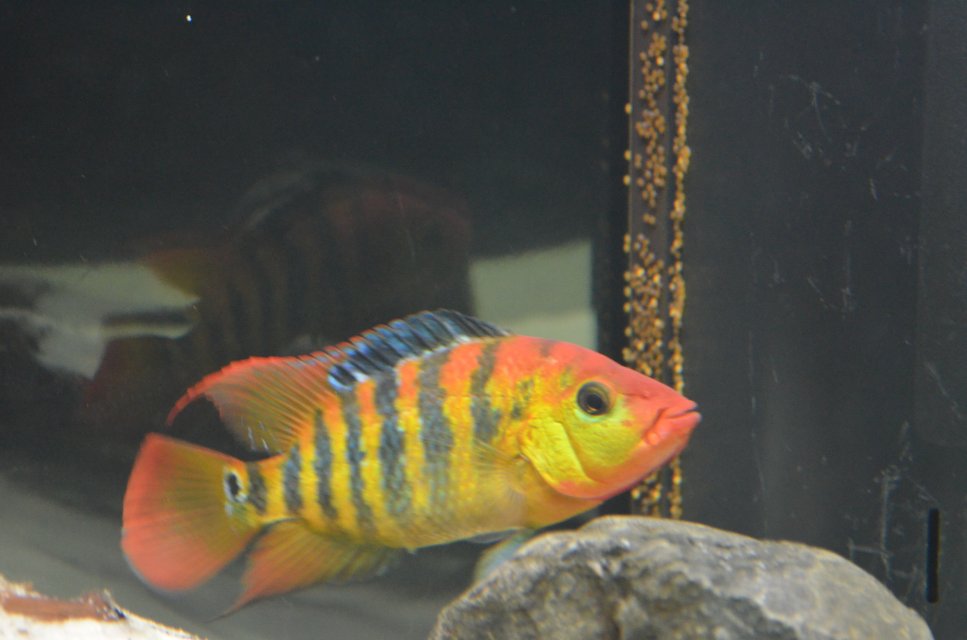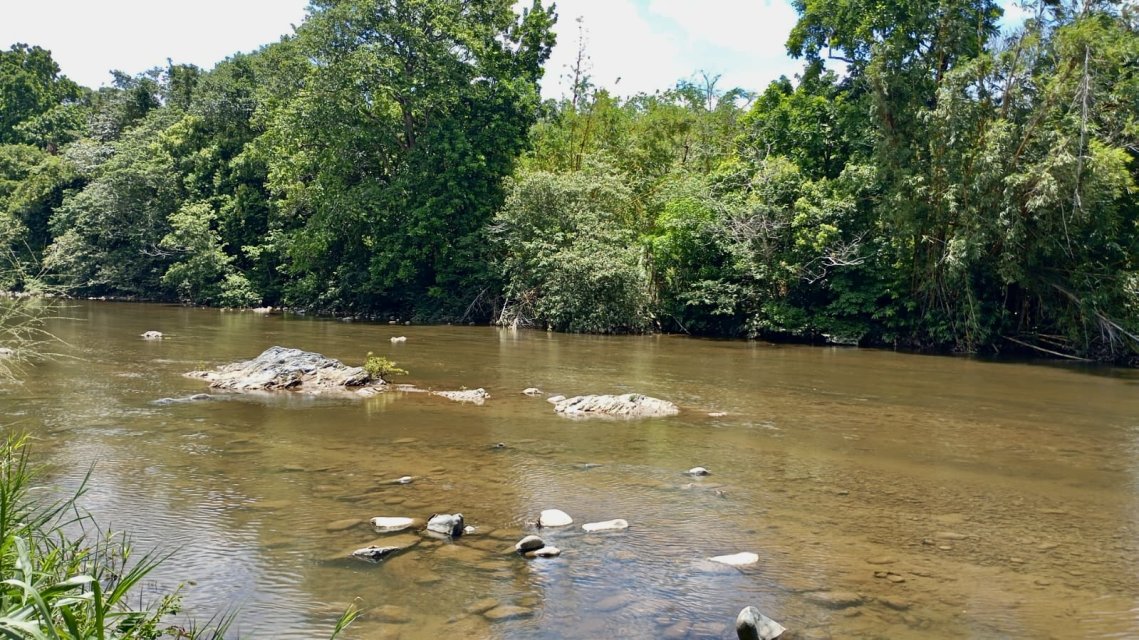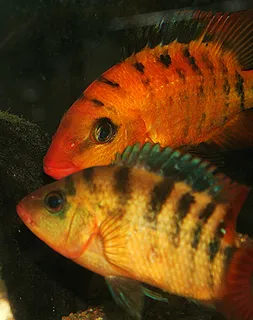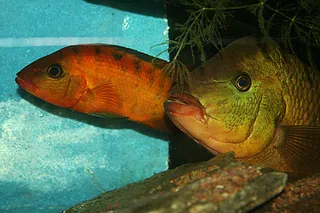I am setting up a 200 or 240 gallon tank with a festae pair and a lot of silver dollars. I am adding a lot of rocks, driftwood and plants(fake most likely) for hiding spots. My question is, has anyone had success keeping small cichlids with large predatory cichlids like festae? If so what kind and do you have any recommendations? I realize that there is a chance it might not work regardless and any smaller fish might become expensive snacks.
Keeping small cichlids with large cichlids
- Thread starter Ryan144
- Start date
-
- Tags
- cichlid dither festae target fish
You are using an out of date browser. It may not display this or other websites correctly.
You should upgrade or use an alternative browser.
You should upgrade or use an alternative browser.
It'll be hard as, of course, each fish has a different personality. I would attempt to keep cichlids that can reach the same size as a single festae.
A breeding pair will take over an entire tank unless you have a fully structured 8ft tank, I would just leave the pair and the silver dollars as festae are brutes especially in breeding mode. I've had a dominant female beat up my males in a group of 8 in a 6ft tank.
As mentioned, maybe a single festae with other robust mates and even that can be iffy. I had a large female chase and bully my Oscar but left my geophagus and severums alone.
A breeding pair will take over an entire tank unless you have a fully structured 8ft tank, I would just leave the pair and the silver dollars as festae are brutes especially in breeding mode. I've had a dominant female beat up my males in a group of 8 in a 6ft tank.
As mentioned, maybe a single festae with other robust mates and even that can be iffy. I had a large female chase and bully my Oscar but left my geophagus and severums alone.
I’ve had quite a few pairs of festae over the years but in general it typically ended the same with just the pair. This witch nearly wiped the entire tank throughout the night on their third spawn. This 240g(7ft) had this pair of festae, a group of Cryptoheros spilurus, and a large school of Psalidodon anisitsi which I was down to 4 of them when I woke up. I then tried a large group of 15 4”Sahyadria denisonii( I hated it as I like to at least stick to the same continent) but they were slowly getting picked off which led me to move the remaining 11 fish. Cryptoheros panamenis worked for a while but I believe it was simply down having the hardscape set up to where the group could hide from the festae, but they eventually came out too. There are quite a few combinations that will work but from experience festae isn’t one of them. I would run it the way you’re planning.
I currently have a large group of Vieja melanura, Cryptoheros cutteri and panamenis growouts throughout the years and they get along splendidly. I also have a group of 10 Oscura heterospila, Amatitlania nanolutea, and huge school of Hyphessobrycon pulchripinnis. So with the right combination it can indeed work but you’ll need to choose a less aggressive fish like festae.

I currently have a large group of Vieja melanura, Cryptoheros cutteri and panamenis growouts throughout the years and they get along splendidly. I also have a group of 10 Oscura heterospila, Amatitlania nanolutea, and huge school of Hyphessobrycon pulchripinnis. So with the right combination it can indeed work but you’ll need to choose a less aggressive fish like festae.

Last edited:
In the rivers and watersheds where festae are endemic there are basically 3 genera of cichlids.
Mesoheros, Andinoacara, and the red hump clade of Geophagus, and very few cichlids together,
because these 3 genera of cichlids tend to inhabit different habitats, and in large territorial separate areas.
A riverine area such as the one below, might only contain only a few individuals, and they tend to keep out of each others way, as adluts.

One does not find these cichlids in large diverse cichlid communities as they do, in Amazonia east of the Andes, or in the densly populated lakes of Africa.
Festae tend to be loners, living in large isolated territories.
Trying to combine their ilk with other cichlids is usually a recipe for disaster., because it does not fit in natural life style and way of being.
These cichlids are much like the Nandopsis haitensus, the only cichlid on the island it comes from, and kills anything other cichlid that enters within.
Or Mayaheros beanii, the only cichlid endemic to the northern Pacific coast of Mexico, that eliminates all other cichlid intruders
And if you are at all trying to be adherent to a correct, legit, and and sustained festae biotope,
Silver Dollars are also, not native to the waters west of the Andes.
All the hiding places in the world may not be enough to keep a determined festae from riddng its territory of a foreign invader.
Do a little research about the cichlids you keep, and expensive mistakes may be less problematic.
To me a 6ft tank with only a single pair, no other fish, especially other cichlids..



Mesoheros, Andinoacara, and the red hump clade of Geophagus, and very few cichlids together,
because these 3 genera of cichlids tend to inhabit different habitats, and in large territorial separate areas.
A riverine area such as the one below, might only contain only a few individuals, and they tend to keep out of each others way, as adluts.

One does not find these cichlids in large diverse cichlid communities as they do, in Amazonia east of the Andes, or in the densly populated lakes of Africa.
Festae tend to be loners, living in large isolated territories.
Trying to combine their ilk with other cichlids is usually a recipe for disaster., because it does not fit in natural life style and way of being.
These cichlids are much like the Nandopsis haitensus, the only cichlid on the island it comes from, and kills anything other cichlid that enters within.
Or Mayaheros beanii, the only cichlid endemic to the northern Pacific coast of Mexico, that eliminates all other cichlid intruders
And if you are at all trying to be adherent to a correct, legit, and and sustained festae biotope,
Silver Dollars are also, not native to the waters west of the Andes.
All the hiding places in the world may not be enough to keep a determined festae from riddng its territory of a foreign invader.
Do a little research about the cichlids you keep, and expensive mistakes may be less problematic.
To me a 6ft tank with only a single pair, no other fish, especially other cichlids..



I do understand about the silver dollars origin, but they are great dithers as a large in a descent sized group with festae.In the rivers and watersheds where festae are endemic there are basically 3 genera of cichlids.
Mesoheros, Andinoacara, and the red hump clade of Geophagus, and very few cichlids together,
because these 3 genera of cichlids tend to inhabit different habitats, and in large territorial separate areas.
A riverine area such as the one below, might only contain only a few individuals, and they tend to keep out of each others way, as adluts.
View attachment 1566968
One does not find these cichlids in large diverse cichlid communities as they do, in Amazonia east of the Andes, or in the densly populated lakes of Africa.
Festae tend to be loners, living in large isolated territories.
Trying to combine their ilk with other cichlids is usually a recipe for disaster., because it does not fit in natural life style and way of being.
These cichlids are much like the Nandopsis haitensus, the only cichlid on the island it comes from, and kills anything other cichlid that enters within.
Or Mayaheros beanii, the only cichlid endemic to the northern Pacific coast of Mexico, that eliminates all other cichlid intruders
And if you are at all trying to be adherent to a correct, legit, and and sustained festae biotope,
Silver Dollars are also, not native to the waters west of the Andes.
All the hiding places in the world may not be enough to keep a determined festae from riddng its territory of a foreign invader.
Do a little research about the cichlids you keep, and expensive mistakes may be less problematic.
To me a 6ft tank with only a single pair, no other fish, especially other cichlids..
View attachment 1566973View attachment 1566972View attachment 1566971
Silver dollars are not found west of the Andes, in S America, just as festae, and most Andinoacara are not found on the east side on the mountain range.
And To me its important to maintain correct biotopes, for a number of what some may consider esoteric reasons
SDs may do OK as dithers in theory, but.......to me, just as I would not keep Peruvian Angelfish, with Central Americans convicts (beyond just the obvious disparity in water parameters),
and although many aquarists with tout Asian Giant Danios as dither fish for American cichlids,
to me both are incorrect as biotope,s and as such not in my consideration.
And To me its important to maintain correct biotopes, for a number of what some may consider esoteric reasons
SDs may do OK as dithers in theory, but.......to me, just as I would not keep Peruvian Angelfish, with Central Americans convicts (beyond just the obvious disparity in water parameters),
and although many aquarists with tout Asian Giant Danios as dither fish for American cichlids,
to me both are incorrect as biotope,s and as such not in my consideration.
I have had better luck pairing larger cichlids with small ones than comparable sized cichlids. I currently have 20 inch dovii in a 400 gallon tank and he shares it with a few small fire mouth and a small male red tiger motaguense. In full
Transparency he did eat the smallest of the firemouth. But over 1 year he has only eaten 1 firemouth and for the most part he doesn’t bother them at all.
I did just introduce a female. So I’ll see how that changes things.
Transparency he did eat the smallest of the firemouth. But over 1 year he has only eaten 1 firemouth and for the most part he doesn’t bother them at all.
I did just introduce a female. So I’ll see how that changes things.
Gotta understand, you keep mentioning people to use CA tetra which are very rare in the states, so the hardy giant dainos are a sizeable match with speed.Silver dollars are not found west of the Andes, in S America, just as festae, and most Andinoacara are not found on the east side on the mountain range.
And To me its important to maintain correct biotopes, for a number of what some may consider esoteric reasons
SDs may do OK as dithers in theory, but.......to me, just as I would not keep Peruvian Angelfish, with Central Americans convicts (beyond just the obvious disparity in water parameters),
and although many aquarists with tout Asian Giant Danios as dither fish for American cichlids,
to me both are incorrect as biotope,s and as such not in my consideration.
I know silver dollars are not "bio-correct" for festae, but they're hardy as well and make an awesome dithers for larger cichlids as well.
And keeping Peruvian angelfish with CA convicts is wayyyy out of context and irrelevant. Lol


